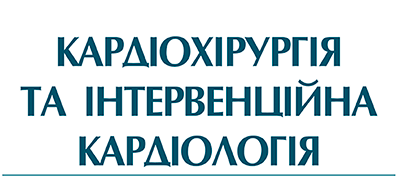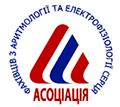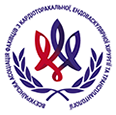Almanac 2012: interventional cardiology
P. Meier, A. Timmis
References
1. Gray HH, Henderson RA, de Belder MA, et al. Guideline Development Group. Early
management of unstable angina and non-ST-segment elevation myocardial
infarction: summary of NICE guidance. Heart 2010;96:1662–8.
2. Boden WE, O’Rourke RA, Teo KK, et al. Optimal medical therapy with or without
PCI for stable coronary disease. N Engl J Med 2007;356:1503–16.
3. Weintraub WS, Spertus JA, Kolm P, et al.COURAGE Trial Research Group,
Mancini GB. Effect of PCI on quality of life in patients with stable coronary
disease. N Engl J Med 2008;359:677–87.
1706 Heart 2012;98:1701–1709. doi:10.1136/heartjnl-2012-302569
Almanac 2012
Downloaded from heart.bmj.com on November 15, 2012 - Published by group.bmj.com
4. Stergiopoulos K, Brown DL. Initial coronary stent implantation with medical
therapy vs medical therapy alone for stable coronary artery disease: meta-analysis
of randomized controlled trials. Arch Intern Med 2012;172:312–19.
5. Henderson RA, O’Flynn N. Management of stable angina: summary of NICE
guidance. Heart 2012;98:500–7.
6. Borden WB, Redberg RF, Mushlin AI, et al. Patterns and intensity of medical
therapy in patients undergoing percutaneous coronary intervention. JAMA
2011;305:1882–9.
7. Aversano T, Lemmon CC, Liu L; Atlantic CPORT Investigators. Outcomes of PCI at
hospitals with or without on-site cardiac surgery. N Engl J Med
2012;366:1792–802. Epub 2012 Mar 25.
8. Singh M, Holmes DR Jr, Dehmer GJ, et al. Percutaneous coronary intervention at
centers with and without on-site surgery: a meta-analysis. JAMA
2011;306:2487–94.
9. Epstein AJ, Polsky D, Yang F, et al. Coronary revascularization trends in the United
States, 2001-2008. JAMA 2011;305:1769–76.
10. Taggart DP, Boyle R, de Belder MA, et al. The 2010 ESC/EACTS guidelines on
myocardial revascularisation. Heart 2011;97:445–6.
11. Chan PS, Patel MR, Klein LW, et al. Appropriateness of percutaneous coronary
intervention. JAMA 2011;306:53–61.
12. Cohen DJ, Van Hout B, Serruys PW, et al. Synergy between PCI with Taxus and
Cardiac Surgery Investigators. Quality of life after PCI with drug-eluting stents or
coronary-artery bypass surgery. N Engl J Med. 2011;364:1016–26.
13. Weintraub WS, Grau-Sepulveda MV, Weiss JM, et al. Comparative effectiveness
of revascularization strategies. N Engl J Med 2012;366:1467–76.
14. Rao SV, Kaltenbach LA, Weintraub WS, et al. Prevalence and outcomes of
same-day discharge after elective percutaneous coronary intervention among older
patients. JAMA 2011;306:1461–7.
15. Khawaja FJ, Shah ND, Lennon RJ, et al. Factors associated with 30-day
readmission rates after percutaneous coronary intervention. Arch Intern Med
2012;172:112–17.
16. Brennan JM, Dai D, Patel MR, et al. Characteristics and long-term outcomes of
percutaneous revascularization of unprotected left main coronary artery stenosis in
the United States: a report from the National Cardiovascular Data Registry, 2004
to 2008. J Am Coll Cardiol 2012;59:648–54.
17. Park SJ, Kim YH, Park DW, et al. Randomized trial of stents versus bypass
surgery for left main coronary artery disease. N Engl J Med 2011;364:1718–27.
18. de la Torre Hernandez JM, Hernández Hernandez F, Alfonso F, et al. LITRO Study
Group (Spanish Working Group on Interventional Cardiology). Prospective
application of pre-defined intravascular ultrasound criteria for assessment of
intermediate left main coronary artery lesions results from the multicenter LITRO
study. J Am Coll Cardiol 2011;58:351–8.
19. Garg S, Serruys PW. Drug-eluting stents: a reappraisal. Heart 2010;96:489–93.
20. de Waha A, Dibra A, Kufner S, et al. Long-term outcome after sirolimus-eluting
stents versus bare metal stents in patients with diabetes mellitus: a patient-level
meta-analysis of randomized trials. Clin Res Cardiol 2011;100:561–70.
21. Baber U, Mehran R, Sharma SK, et al. Impact of the everolimus-eluting stent on
stent thrombosis: a meta-analysis of 13 randomized trials. J Am Coll Cardiol
2011;58:1569–77.
22. Palmerini T, Biondi-Zoccai G, Della Riva D, et al. Stent thrombosis with
drug-eluting and bare-metal stents: evidence from a comprehensive network
meta-analysis. Lancet 2012;379:1393–402.
23. Meier P, Brilakis ES, Corti R, et al. Drug-eluting versus bare-metal stent for
treatment of saphenous vein grafts: a meta-analysis. PLoS One 2010;5:e11040.
24. Kalesan B, Pilgrim T, Heinimann K, et al. Comparison of drug-eluting stents with
bare metal stents in patients with ST-segment elevation myocardial infarction. Eur
Heart J 2012;33:977–87.
25. Serruys PW, Onuma Y, Dudek D, et al. Evaluation of the second generation of a
bioresorbable everolimus-eluting vascular scaffold for the treatment of de novo
coronary artery stenosis: 12-month clinical and imaging outcomes. J Am Coll
Cardiol 2011;58:1578–88.
26. Johnman C, Pell JP, Mackay DF, et al. Clinical outcomes following radial versus
femoral artery access in primary or rescue percutaneous coronary intervention in
Scotland: retrospective cohort study of 4534 patients. Heart 2012;98:552–7.
27. Patterson T, Foale RA. If the radial artery is the new standard of care in primary
percutaneous coronary intervention, why is most intervention done by the femoral
approach? Heart 2011;97:521–2.
28. Cayla G, Silvain J, Barthelemy O, et al. Trans-radial approach for catheterisation in
non-ST segment elevation acute coronary syndrome: an analysis of major bleeding
complications in the ABOARD Study. Heart 2011;97:887–91.
29. Mamas MA, Ratib K, Routledge H, et al. Influence of access site selection on
PCI-related adverse events in patients with STEMI: meta-analysis of randomised
controlled trials. Heart 2012;98:303–11.
30. Vink MA, Amoroso G, Dirksen MT, et al. Routine use of the transradial approach
in primary percutaneous coronary intervention: procedural aspects and outcomes in
2209 patients treated in a single high-volume centre. Heart 2011;97:1938–42.
31. Amoroso G, Kiemeneij F. Transradial access for primary percutaneous coronary
intervention: the next standard of care? Heart 2010;96:1341–4.
32. Vuurmans T, Byrne J, Fretz E, et al. Chronic kidney injury in patients after cardiac
catheterisation or percutaneous coronary intervention: a comparison of radial and
femoral approaches (from the British Columbia Cardiac and Renal Registries). Heart
2010;96:1538–42.
33. Jolly SS, Yusuf S, Cairns J, et al. Radial versus femoral access for coronary
angiography and intervention in patients with acute coronary syndromes (RIVAL): a
randomised, parallel group, multicentre trial. Lancet 2011;377:1409–20.
34. Siller-Matula JM, Huber K, Christ G, et al. Impact of clopidogrel loading dose on
clinical outcome in patients undergoing percutaneous coronary intervention: a
systematic review and meta-analysis. Heart 2010;97:98–105.
35. Patti G, Bárczi G, Orlic D, et al. Outcome comparison of 600- and 300-mg loading
doses of clopidogrel in patients undergoing primary percutaneous coronary
intervention for ST-segment elevation myocardial infarction: results from the
ARMYDA-6 MI (Antiplatelet therapy for Reduction of MYocardial Damage during
Angioplasty-Myocardial Infarction) randomized study. J Am Coll Cardiol
2011;58:1592–9.
36. Breet NJ, van Werkum JW, Bouman HJ, et al. High on-treatment platelet
reactivity to both aspirin and clopidogrel is associated with the highest risk of
adverse events following percutaneous coronary intervention. Heart
2011;97:983–90.
37. Bouman HJ, Harmsze AM, van Werkum JW, et al. Variability in on-treatment
platelet reactivity explained by CYP2C19*2 genotype is modest in clopidogrel
pretreated patients undergoing coronary stenting. Heart 2011;97:1239–44.
38. Park KW, Park JJ, Lee SP, et al. Cilostazol attenuates on-treatment platelet
reactivity in patients with CYP2C19 loss of function alleles receiving dual
antiplatelet therapy: a genetic substudy of the CILON-T randomised controlled trial.
Heart 2011;97:641–7.
39. Price MJ, Berger PB, Teirstein PS, et al.GRAVITAS Investigators. Standard- vs
high-dose clopidogrel based on platelet function testing after percutaneous
coronary intervention: the GRAVITAS randomized trial. JAMA 2011;305:
1097–105.
40. Sambu N, Dent H, Englyst N, et al. Effect of clopidogrel withdrawal on platelet
reactivity and vascular inflammatory biomarkers 1 year after drug-eluting stent
implantation: results of the prospective, single-centre CESSATION study. Heart
2011;97:1661–7.
41. Warner TD, Armstrong PC, Curzen NP, et al. Dual antiplatelet therapy in
cardiovascular disease: does aspirin increase clinical risk in the presence of potent
P2Y12 receptor antagonists? Heart 2010;96:1693–4.
42. Smit JJ, van Werkum JW, ten Berg J, et al. Prehospital triple antiplatelet therapy
in patients with acute ST elevation myocardial infarction leads to better platelet
aggregation inhibition and clinical outcome than dual antiplatelet therapy. Heart
2010;96:1815–20.
43. Hill RA, Chung H, George E, et al. Prasugrel for the treatment of acute coronary
syndromes with percutaneous coronary intervention: NICE technology appraisal
guidance. Heart 2010;96:1407–8.
44. Eshaghian S, Shah PK, Kaul S. Advances in antiplatelet treatment for acute
coronary syndromes. Heart 2010;96:656–61.
45. Wiviott SD, Braunwald E, McCabe CH, et al. TRITON-TIMI 38 Investigators.
Prasugrel versus clopidogrel in patients with acute coronary syndromes. N Engl J
Med 2007;357:2001–15.
46. Wallentin L, Becker RC, Budaj A, et al. PLATO Investigators, Freij A, Thorsén
M. Ticagrelor versus clopidogrel in patients with acute coronary syndromes. N Engl
J Med 2009;361:1045–57.
47. Mahoney EM, Wang K, Arnold SV, et al. Cost-effectiveness of prasugrel versus
clopidogrel in patients with acute coronary syndromes and planned percutaneous
coronary intervention: results from the trial to assess improvement in therapeutic
outcomes by optimizing platelet inhibition with Prasugrel-Thrombolysis in
myocardial infarction TRITON-TIMI 38. Circulation 2010;121:71–9.
48. Nikolic E, Janzon M, Hauch O, et al. Cost-effectiveness of treating acute coronary
syndrome patients with ticagrel or for 12 months: results from the PLATO study.
Eur Heart J. Published Online First: 19 June 2012.
49. Hochtl T, Farhan S, Wojta J, et al. New anticoagulant agents in acute coronary
syndromes. Heart 2010;97:244–52.
50. Stone GW, Witzenbichler B, Guagliumi G, et al.HORIZONS-AMI Trial Investigators.
Heparin plus a glycoprotein IIb/IIIa inhibitor versus bivalirudin monotherapy and
paclitaxel-eluting stents versus bare-metal stents in acute myocardial infarction
(HORIZONS-AMI): final 3-year results from a multicentre, randomised controlled
trial. Lancet 2011;377:2193–204.
51. Schwenkglenks M, Toward TJ, Plent S, et al. Cost-effectiveness of bivalirudin
versus heparin plus glycoprotein IIb/IIIa inhibitor in the treatment of acute
ST-segment elevation myocardial infarction. Heart 2012;98:544–51.
52. Koutouzis M, Lagerqvist B, James S, et al. Unfractionated heparin administration
in patients treated with bivalirudin during primary percutaneous coronary
intervention is associated with lower mortality and target lesion thrombosis: a
report from the Swedish Coronary Angiography and Angioplasty Registry (SCAAR).
Heart 2011;97:1484–8.
53. Langrish JP, Fox KA. Optimal antithrombotic treatment during primary
percutaneous coronary intervention? Heart 2011;97:1459–60.
Heart 2012;98:1701–1709. doi:10.1136/heartjnl-2012-302569 1707
Almanac 2012
Downloaded from heart.bmj.com on November 15, 2012 - Published by group.bmj.com
54. Silvain J, Beygui F, Barthélémy O, et al. Efficacy and safety of enoxaparin versus
unfractionated heparin during percutaneous coronary intervention: systematic
review and meta-analysis. BMJ. 2012;344:e553.
55. Parise H, Maehara A, Stone GW, et al. Meta-analysis of randomized studies
comparing intravascular ultrasound versus angiographic guidance of percutaneous
coronary intervention in pre-drug-eluting stent era. Am J Cardiol 2011;107:374–82.
56. Gauss S, Achenbach S, Pflederer T, et al. Assessment of coronary artery
remodelling by dual-source CT: a head-to-head comparison with intravascular
ultrasound. Heart 2011;97:991–7.
57. Schepis T, Marwan M, Pflederer T, et al. Quantification of non-calcified coronary
atherosclerotic plaques with dual-source computed tomography: comparison with
intravascular ultrasound. Heart 2010;96:610–15.
58. Tahara S, Bezerra HG, Sirbu V, et al. Angiographic, IVUS and OCT evaluation of the
long-term impact of coronary disease severity at the site of overlapping
drug-eluting and bare metal stents: a substudy of the ODESSA trial. Heart
2010;96:1574–8.
59. Inoue T, Shite J, Yoon J, et al. Optical coherence evaluation of everolimus-eluting
stents 8 months after implantation. Heart 2010;97:1379–84.
60. Stone GW, Maehara A, Lansky AJ, et al. A prospective natural-history study of
coronary atherosclerosis. N Engl J Med 2011;364:226–35.
61. Li QX, Fu QQ, Shi SW, et al. Relationship between plasma inflammatory markers
and plaque fibrous cap thickness determined by intravascular optical coherence
tomography. Heart 2010;96:196–201.
62. Her SH, Yoo KD, Park CS, et al. Long-term clinical outcomes of overlapping
heterogeneous drug-eluting stents compared with homogeneous drug-eluting
stents. Heart 2011;97:1501–6.
63. Behan MW, Holm NR, Curzen NP, et al. Simple or complex stenting for bifurcation
coronary lesions: a patient-level pooled-analysis of the Nordic Bifurcation Study and
the British Bifurcation Coronary Study. Circ Cardiovasc Interv 2011;4:57–64.
64. Gwon HC, Hahn JY, Koo BK, et al. Final kissing ballooning and long-term clinical
outcomes in coronary bifurcation lesions treated with 1-stent technique: results
from the COBIS registry. Heart 2011;98:225–31.
65. Mills NL, Churchhouse AM, Lee KK, et al. Implementation of a sensitive troponin
I assay and risk of recurrent myocardial infarction and death in patients with
suspected acute coronary syndrome. JAMA 2011;305:1210–16.
66. Jaffe AS, Apple FS, Morrow DA, et al. Being rational about (im)precision: a
statement from the Biochemistry Subcommittee of the Joint European Society of
Cardiology/American College of Cardiology Foundation/American Heart Association/
World Heart Federation Task Force for the definition of myocardial infarction. Clin
Chem 2010;56:941–3.
67. Mills NL, Lee KK, McAllister DA, et al. Implications of lowering threshold of
plasma troponin concentration in diagnosis of myocardial infarction: cohort study.
BMJ 2012;344:e1533.
68. Baker JO, Reinhold J, Redwood S, et al. Troponins: redefining their limits. Heart
2011;97:447–52.
69. Korosoglou G, Lehrke S, Mueller D, et al. Determinants of troponin release in
patients with stable coronary artery disease: insights from CT angiography
characteristics of atherosclerotic plaque. Heart 2010;97:823–31.
70. Goodacre SW, Bradburn M, Cross E, et al. The Randomised Assessment of
Treatment using Panel Assay of Cardiac Markers (RATPAC) trial: a randomised
controlled trial of point-of-care cardiac markers in the emergency department.
Heart 2010;97:190–6.
71. Fox KA, Eagle KA, Gore JM, et al. The Global registry of acute coronary events,
1999 to 2009–GRACE. Heart 2010;96:1095–101.
72. Jolly SS, Shenkman H, Brieger D, et al. Quantitative troponin and death,
cardiogenic shock, cardiac arrest and new heart failure in patients with
non-ST-segment elevation acute coronary syndromes (NSTE ACS): insights from
the Global Registry of Acute Coronary Events. Heart 2010;97:197–202.
73. Politi L, Sgura F, Rossi R, et al. A randomised trial of target-vessel versus
multi-vessel revascularisation in ST-elevation myocardial infarction: major adverse
cardiac events during long-term follow-up. Heart 2010;96:662–7.
74. Vlaar PJ, Mahmoud KD, Holmes DR Jr, et al. Culprit vessel only versus
multivessel and staged percutaneous coronary intervention for multivessel disease
in patients presenting with ST-segment elevation myocardial infarction: a pairwise
and network meta-analysis. J Am Coll Cardiol 2011;58:692–703.
75. Kornowski R, Mehran R, Dangas G, et al. HORIZONS-AMI Trial Investigators.
Prognostic impact of staged versus "one-time" multivessel percutaneous
intervention in acute myocardial infarction: analysis from the HORIZONS-AMI
(harmonizing outcomes with revascularization and stents in acute myocardial
infarction) trial. J Am Coll Cardiol 2011;58:704–11.
76. Suarez-Barrientos A, Lopez-Romero P, Vivas D, et al. Circadian variations of
infarct size in acute myocardial infarction. Heart 2011;97:970–6.
77. Eitel I, Desch S, de Waha S, et al. Long-term prognostic value of myocardial
salvage assessed by cardiovascular magnetic resonance in acute reperfused
myocardial infarction. Heart 2011;97:2038–45.
78. Mather AN, Fairbairn TA, Ball SG, et al. Reperfusion haemorrhage as determined
by cardiovascular MRI is a predictor of adverse left ventricular remodelling and
markers of late arrhythmic risk. Heart 2010;97:453–9.
79. O’Regan DP, Ariff B, Neuwirth C, et al. Assessment of severe reperfusion injury
with T2* cardiac MRI in patients with acute myocardial infarction. Heart
2010;96:1885–91.
80. Kharbanda RK. Cardiac conditioning: a review of evolving strategies to reduce
ischaemia-reperfusion injury. Heart 2010;96:1179–86.
81. Ludman AJ, Yellon DM, Hasleton J, et al. Effect of erythropoietin as an adjunct to
primary percutaneous coronary intervention: a randomised controlled clinical trial.
Heart 2011;97:1560–5.
82. Pedersen CM, Schmidt MR, Barnes G, et al. Bradykinin does not mediate remote
ischaemic preconditioning or ischaemia-reperfusion injury in vivo in man. Heart
2011;97:1857–61.
83. Ikonomidis I, Iliodromitis EK, Tzortzis S, et al. Staccato reperfusion improves
myocardial microcirculatory function and long-term left ventricular remodelling: a
randomised contrast echocardiography study. Heart 2010;96:1898–903.
84. Sorensson P, Saleh N, Bouvier F, et al. Effect of postconditioning on infarct size in
patients with ST elevation myocardial infarction. Heart 2010;96:1710–15.
85. Patel MR, Smalling RW, Thiele H, et al. Intra-aortic balloon counterpulsation and
infarct size in patients with acute anterior myocardial infarction without shock: the
CRISP AMI randomized trial. JAMA 2011;306:1329–37.
86. Reed M, Meier P, Tamhane UU, et al. The relative renal safety of iodixanol
compared with low-osmolar contrast media: a meta-analysis of randomized
controlled trials. JACC Cardiovasc Interv 2009;2:645–54.
87. Wi J, Ko YG, Kim JS, et al. Impact of contrast-induced acute kidney injury with
transient or persistent renal dysfunction on long-term outcomes of patients with
acute myocardial infarction undergoing percutaneous coronary intervention. Heart
2011;97:1753–7.
88. Gallagher S, Knight C. Contrast-induced nephropathy in primary percutaneous
coronary intervention. Heart 2011;97:1723–5.
89. Meier P, Gurm HS. Is simpler also better? Brief sodium bicarbonate infusion to
prevent contrast-induced nephropathy. Am J Cardiol 2010;105:1042–3.
90. Hekimian G, Kim M, Passefort S, et al. Preoperative use and safety of coronary
angiography for acute aortic valve infective endocarditis. Heart 2010;96:696–700.
91. O’Leary DH, Reuwer AQ, Nissen SE, et al. Effect of rimonabant on carotid
intima-media thickness (CIMT) progression in patients with abdominal obesity and
metabolic syndrome: the AUDITOR Trial. Heart 2011;97:1143–50.
92. Roffi M. Peripheral arterial disease. Current evidence for carotid endarterectomy
and carotid artery stenting. Heart 2010;96:636–42.
93. Brott TG, Hobson RW 2nd, Howard G, et al.CREST Investigators. Stenting versus
endarterectomy for treatment of carotid-artery stenosis. N Engl J Med
2010;363:11–23.
94. Meier P, Knapp G, Tamhane U, et al. Short term and intermediate term
comparison of endarterectomy versus stenting for carotid artery stenosis:
systematic review and meta-analysis of randomised controlled clinical trials. BMJ
2010;340:c467.
95. Neequaye SK, Halliday AW. Carotid artery stenting: the 2011 NICE guidelines.
Heart 2011;98:274–5.
96. Venkatachalam S, Gray BH, Mukherjee D, et al. Contemporary management of
concomitant carotid and coronary artery disease. Heart 2010;97:175–80.
97. Xie W, Liang L, Zhao L, et al. Combination of carotid intima-media thickness and
plaque for better predicting risk of ischaemic cardiovascular events. Heart
2011;97:1326–31.
98. Kodali SK, Williams MR, Smith CR, et al. PARTNER Trial Investigators.Two-year
outcomes after transcatheter or surgical aortic-valve replacement. N Engl J Med
2012;366:1686–95.
99. Abdel-Wahab M, Zahn R, Horack M, et al. Aortic regurgitation after transcatheter
aortic valve implantation: incidence and early outcome. Results from the German
transcatheter aortic valve interventions registry. Heart 2010;97:899–906.
100. Rodés-Cabau J, Gutiérrez M, Bagur R, et al. Incidence, predictive factors, and
prognostic value of myocardial injury following uncomplicated transcatheter aortic
valve implantation. J Am Coll Cardiol 2011;57:1988–99.
101. Reynolds MR, Magnuson EA, Lei Y, et al. Placement of Aortic Transcatheter
Valves (PARTNER) Investigators. Health-related quality of life after transcatheter
aortic valve replacement in inoperable patients with severe aortic stenosis.
Circulation 2011;124:1964–72.
102. Gotzmann M, Hehen T, Germing A, et al. Short-term effects of transcatheter
aortic valve implantation on neurohormonal activation, quality of life and 6-minute
walk test in severe and symptomatic aortic stenosis. Heart 2010;96:1102–6.
103. Watt M, Mealing S, Eaton J, et al. Cost-effectiveness of transcatheter aortic valve
replacement in patients ineligible for conventional aortic valve replacement. Heart
2011;98:370–6.
104. Reynolds MR, Magnuson EA, Wang K, et al. PARTNER Investigators.
Cost-effectiveness of transcatheter aortic valve replacement compared with
standard care among inoperable patients with severe aortic stenosis: results from
the placement of aortic transcatheter valves (PARTNER) trial (Cohort B). Circulation
2012;125:1102–9.
105. Piazza N, Otten A, Schultz C, et al. Adherence to patient selection criteria in
patients undergoing transcatheter aortic valve implantation with the 18F CoreValve
ReValving System. Heart 2010;96:19–26.
1708 Heart 2012;98:1701–1709. doi:10.1136/heartjnl-2012-302569
Almanac 2012
Downloaded from heart.bmj.com on November 15, 2012 - Published by group.bmj.com
106. Tamburino C, Capodanno D, Ussia GP. TAVI as a threat to surgical practice:
“much ado about nothing” or “the quiet before the storm”? Heart 2010;96:
1609–10.
107. Grant SW, Devbhandari MP, Grayson AD, et al. What is the impact of providing a
transcatheter aortic valve implantation service on conventional aortic valve surgical
activity: patient risk factors and outcomes in the first 2 years. Heart
2010;96:1633–7.
108. Farouque HMO, Clark DJ. Percutaneous mitral valve leaflet repair for mitral
regurgitation: NICE guidance. Heart 2010;96:385–7.
109. Feldman T, Kar S, Rinaldi M, et al. Percutaneous mitral repair with the MitraClip
system: safety and midterm durability in the initial EVEREST (Endovascular Valve
Edge-to-Edge REpair Study) cohort. J Am Coll Cardiol 2009;54:686–94.
110. Glower D, Ailawadi G, Argenziano M, et al. EVEREST II Investigators. EVEREST II
randomized clinical trial: predictors of mitral valve replacement in de novo surgery
or after the MitraClip procedure. J Thorac Cardiovasc Surg 2012;143(4 Suppl):
S60–3.
111. Gaemperli O, Moccetti M, Surder D, et al. Acute haemodynamic changes after
percutaneous mitral valve repair: relation to mid-term outcomes. Heart
2012;98:126–32.
112. Nagueh SF, Groves BM, Schwartz L, et al. Alcohol septal ablation for the
treatment of hypertrophic obstructive cardiomyopathy. A multicenter North
American registry. J Am Coll Cardiol 2011;58:2322–8.
113. Ball W, Ivanov J, Rakowski H, et al. Long-term survival in patients with resting
obstructive hypertrophic cardiomyopathy comparison of conservative versus
invasive treatment. J Am Coll Cardiol 2011;58:2313–21.
114. Galve E, Sambola A, Saldaña G, et al. Late benefits of dual-chamber pacing in
obstructive hypertrophic cardiomyopathy: a 10-year follow-up study. Heart
2010;96:352–6.
115. Jensen MK, Almaas VM, Jacobsson L, et al. Long-term outcome of
percutaneous transluminal septal myocar dial ablation in hypertrophic obstructive
cardiomyopathy: a Scandinavian multicenter study. Circ Cardiovasc Interv 2011;4:
256–65.
Heart 2012;








